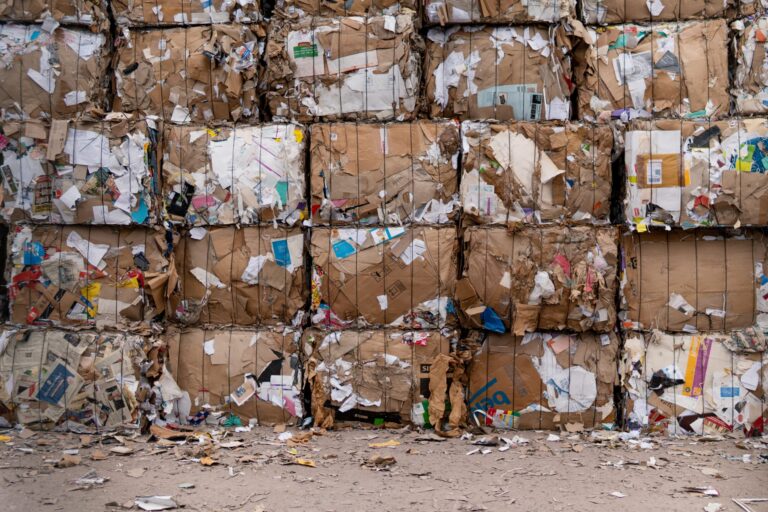9 Simple Ways to Reduce Your Carbon Footprint Through Thoughtful Purchases
 Having a completely sustainable lifestyle isn’t something you can adopt overnight, but we all can become more conscious consumers in time. Making thoughtful purchases doesn’t necessarily mean going vegan or only buying clothing secondhand, it’s about thinking about what you buy before you purchase it and making a choice that will hopefully help, rather than hurt the environment. Every little bit of sustainable action helps, so never feel like what you do doesn’t matter!
Having a completely sustainable lifestyle isn’t something you can adopt overnight, but we all can become more conscious consumers in time. Making thoughtful purchases doesn’t necessarily mean going vegan or only buying clothing secondhand, it’s about thinking about what you buy before you purchase it and making a choice that will hopefully help, rather than hurt the environment. Every little bit of sustainable action helps, so never feel like what you do doesn’t matter!
Here are some simple changes you can make to start living a more clean, green life.
Clothing
- Buy From Sustainable Companies
Many people don’t like the idea of wearing someone else’s shoes and we understand that. For everything that you would prefer to buy new, try doing some research to find sustainable companies making eco-friendly versions. There are lots of sustainable shoes on the market, from skate sneakers to boots, sandals, and heels. Check the packaging and company website to learn about their practices and make sure they are using environmentally-friendly production methods as well as materials.
- Shop Secondhand
Buying clothing secondhand is not only much better for the environment, it’s also fun! You can find amazing deals on items that are high-quality and unique. More importantly, by recycling clothing, you are keeping products in circulation and reducing waste. This is a much better way of shopping than buying from fast fashion retailers.
- Buy Less
Shopping may be a fun habit, but it’s not exactly environmentally-friendly. Instead of impulse buying lots of clothing, try to adopt a minimalist mentality and pare down your shopping to what you really need. One way of cutting back is to only buy items that you know you will wear at least thirty times.
Groceries
- Shop at Farmers Market
While large grocery stores and superstores are convenient, they aren’t usually eco-friendly. Make your shopping experience more sustainable by buying fruits and vegetables, bread, fish, and cheese from your local farmer’s market instead. Most of these products will have been farmed locally and not imported and frozen like what you find on grocery store shelves. As a result, they are generally far more sustainable and often taste much better. You’ll also be helping real people in your community and boosting your local economy.
- Avoid Single Use Plastics
Instead of buying single use plastic products, make considered swaps with eco-friendly alternatives. From a reusable water bottle to metal straws and beeswax food wrap, there are plenty of great substitutes for single use plastic. You can also reduce your carbon footprint by bringing a reusable bag and choosing produce that isn’t packaged, or comes in recyclable packaging instead of plastic wrap.
- Cut Down on Meat
The livestock industry is responsible for generating 14.5 percent of global greenhouse gas emissions, which is significant. Not only do cows produce methane gas, but many natural forests are being cleared for the raising of livestock. While you don’t need to cut out red meat completely, consider cutting back a little bit. There are lots of delicious and hearty vegetarian substitutes that have a much smaller environmental footprint.
Household Items
- Buy Energy Efficient Light Bulbs
We waste a lot of energy in the home without even realizing it. An easy switch that you can do today is to buy lightbulbs that are LED. These last much longer and are more durable than traditional light bulbs.
- Choose Reusable Bathroom Products
Other than the kitchen, your bathroom is a place where you use a lot of single-use plastic. Make a list of everything that comes in a plastic bottle or is made of throwaway plastic and try to avoid these products the next time you are at the store. For example, instead of buying shampoo, conditioner, and body wash in a plastic bottle, opt for bar versions. From feminine products to razors and toothbrushes, check online to see what eco-friendly options you can buy instead of their plastic counterparts.
- Try a Low Flow Showerhead
About 1.7 trillion gallons of water are wasted every year. While you can cut down on water usage by turning off the tap while not in use and taking shorter showers, you can also make an energy-efficient change to the flow of the water by installing a low flow showerhead. This will conserve water and save you money overtime.


